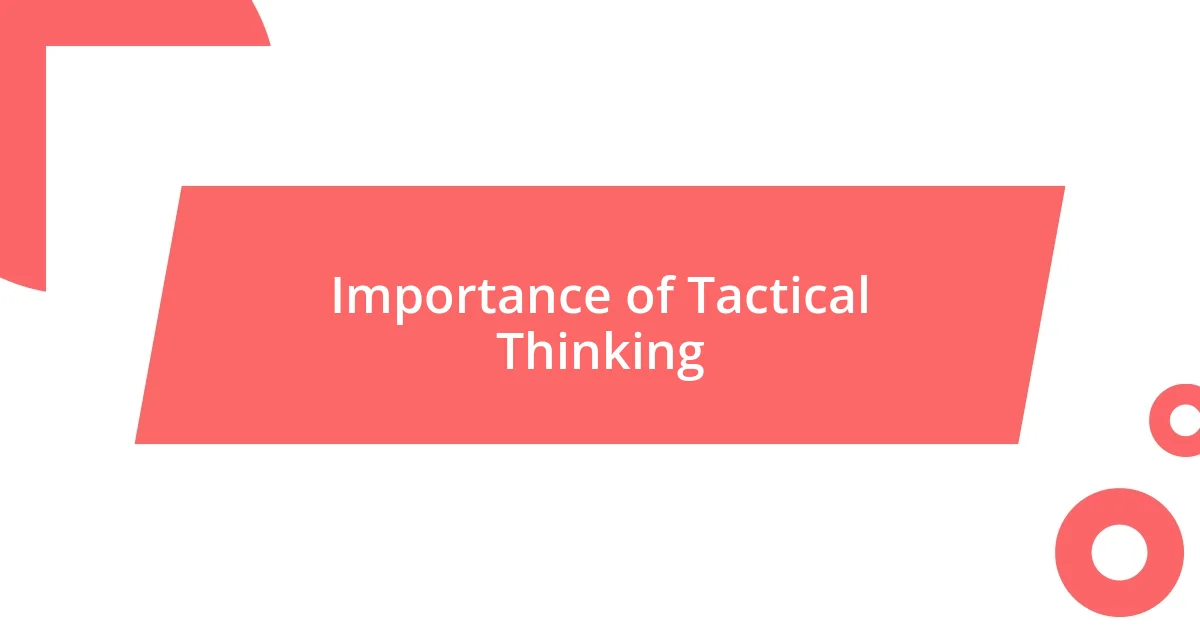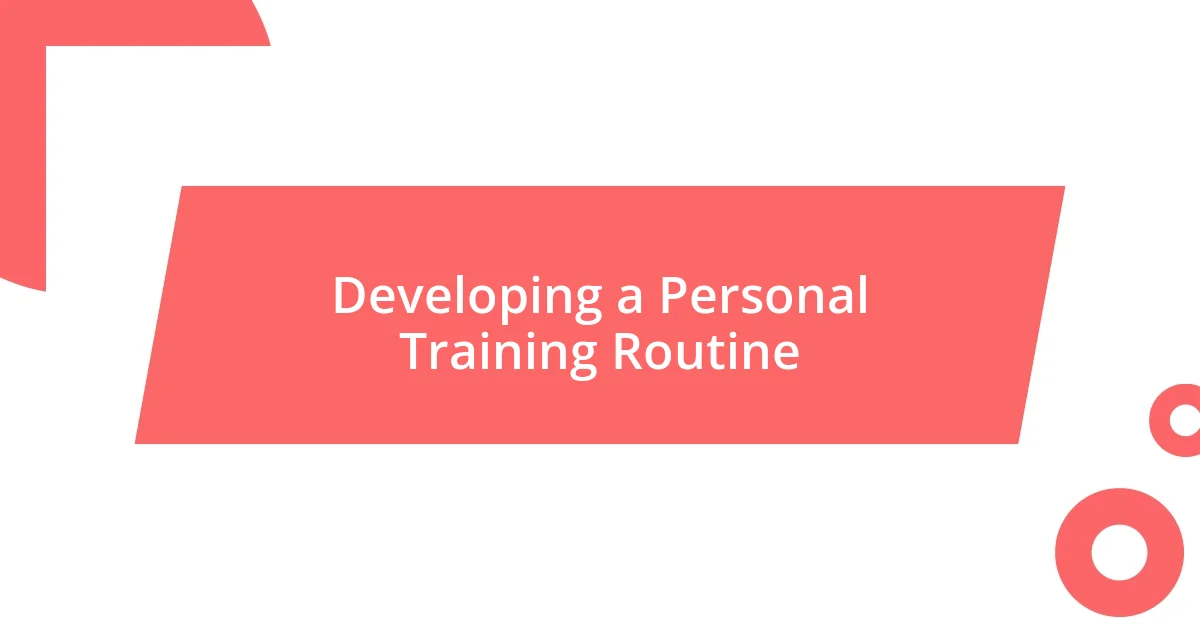Key takeaways:
- Understanding piece movements and central control are foundational for developing chess strategies and enhancing gameplay.
- Tactical thinking and recognizing common patterns, such as forks and pins, are essential for anticipating opponents and improving results.
- Creating a structured training routine, including puzzles and game analysis, while tracking progress fosters skill development and a growth mindset.

Understanding the Basics of Chess
Chess is often viewed as a complex game, but at its core, it’s all about squares, pieces, and strategy. I remember the first time I saw a chessboard; it felt almost intimidating with those 64 squares staring back at me. Yet, there was something alluring about those pieces, each unique in its movements and purpose, that drew me in.
Understanding how each piece moves is foundational. For instance, the rook moves in straight lines, while the knight’s jumps might seem whimsical at first but open a world of possibilities. Isn’t it fascinating how learning these simple rules can lead to intricate strategies? I recall a moment when, after grasping the knight’s movement, I unexpectedly checkmated my opponent, and the thrill of that victory sparked my passion for the game.
The importance of controlling the center of the board cannot be overstated. In my early games, I often let this slip by, focusing instead on flashy moves. But when I finally realized the power of central control, everything changed. Have you experienced that shift in perspective? It’s like discovering a secret that elevates your entire gameplay, transforming how you approach each match.

Importance of Tactical Thinking
Tactical thinking is crucial in chess because it allows players to anticipate their opponent’s moves and develop strategic plans. I remember a game where I missed a simple tactic that could have led to victory. That feeling of regret taught me the significance of honing my tactical skills. Each piece on the board has potential, and recognizing that potential through tactical thinking can mean the difference between a win and a loss.
Here are a few reasons why tactical thinking is essential in chess:
- Enhanced Awareness: It sharpens your ability to notice threats and opportunities on the board.
- Improved Strategy: It provides a framework for planning moves that can outsmart your opponent.
- Increased Confidence: Mastering tactical motifs boosts self-assurance, making you bolder in your plays.
- Greater Enjoyment: Successfully executing tactics not only improves your game but also deepens your love for chess.

Identifying Common Tactical Patterns
Identifying common tactical patterns in chess has been a game-changer for me. As I started studying tactics, I quickly realized that certain formations and moves kept appearing across different games. For instance, the “fork” tactic, where one piece, like a knight, attacks two or more enemy pieces simultaneously, has led to many satisfying victories. The thrill I felt during a match when I executed my first fork still resonates with me.
Another essential pattern I’ve learned is the “pin.” This tactic immobilizes a piece because moving it would expose a more valuable piece behind it. I remember one game where I skillfully pinned my opponent’s knight to their queen, seizing control and leading to a decisive win. Recognizing these patterns not only increases your effectiveness but also makes you feel more connected to the game and your strategic decisions.
Building on this foundation, it’s crucial to practice identifying these patterns in your games. Analyzing past moves and considering what might have been done differently has enhanced my tactical vision. The more comfortable you become with these situations, the more instinctual your responses will be during actual play. Those moments where I predict my opponent’s moves and counter them feel immensely rewarding; it’s like having a little chess superpower.
| Tactical Pattern | Description |
|---|---|
| Fork | Attacks two or more pieces simultaneously with one piece. |
| Pin | Holds a piece in place due to the threat on a more valuable piece behind it. |
| Skewer | Forces an opponent to move a valuable piece, exposing a less valuable piece behind it. |
| Discovered Attack | Moving a piece reveals an attack by another piece; this can create surprising threats. |

Practicing with Chess Puzzles
Practicing with chess puzzles has been a transformative part of my chess journey. I vividly recall the first time I tackled a puzzle that seemed overwhelmingly complex. After several attempts, breaking down the problem into smaller parts turned it into a rewarding challenge rather than a daunting task. That moment of realization sparked a genuine love for puzzles, bringing excitement into each session as I sought out new ones that tested my tactical skills.
I often find myself engaging with puzzles that present real-game scenarios. Solving such challenges not only sharpens my tactical thinking but also gives insight into my decision-making process during live play. For example, I once faced a puzzle that required three precise moves to checkmate. The satisfaction of finding the correct solution felt like a mini victory, fueling my desire to tackle even tougher puzzles in the future. Isn’t it amazing how something like chess puzzles can provide both a safe environment for practice and an engaging way to deepen one’s skills?
Incorporating puzzles into my routine has also increased my pattern recognition. I remember a particularly frustrating week where I couldn’t seem to improve my game. Seeking solace in chess puzzles during that time was a game-changer; I learned to recognize tactical motifs more instinctively. The joy of finding solutions and the thrill of seeing those same patterns surface during my games became a source of motivation. Have you ever felt that rush of excitement when a puzzle mirrors a situation you’ve faced in a match? That connection between practice and real play makes every puzzle session worthwhile.

Analyzing Classic Chess Games
Analyzing classic chess games has been an enlightening experience for me. I remember diving into games played by grandmasters and feeling an overwhelming sense of admiration for their strategic thinking. Each match tells a story, and I often pause to contemplate why certain moves were made. It’s incredible how studying these games reveals hidden patterns and brilliant tactical ideas I would have otherwise overlooked.
One memorable instance was when I analyzed the famous game between Fischer and Spassky. I was struck by how Fischer’s opening moves set the stage for his aggressive tactics later on. As I replayed the positions, I could almost feel the tension in the air and the pressure on both sides. This understanding has not only deepened my appreciation for classical chess but also helped me recognize similar opportunities in my games.
There’s a unique thrill in examining historical matches that resonate with my own playing style. Have you ever found yourself inspired by a classic game? I certainly have. Each time I see a clever maneuver or a decisive checkmate, it pushes me to incorporate those lessons into my strategy. By analyzing these iconic games, I’ve learned to approach my chess board with a fresh mindset, eager to apply the insights gained from legends of the past.

Developing a Personal Training Routine
Creating a personal training routine has been a game-changer for my chess development. I distinctly remember the time I decided to structure my practice sessions. I set aside at least an hour each day, mixing tactical exercises, game analysis, and timed matches. This consistency not only built my skills but forged a discipline that has become integral to my chess journey. Are you dedicating enough time to your practice?
One approach that worked wonders for me was keeping a training journal. I’d jot down my goals and reflect on what I learned after each session. There were days when I felt overwhelmed or frustrated, wondering if my efforts were in vain. Yet, revisiting those entries showed me the gradual progress I was making. The satisfaction of seeing growth over time fueled my desire to push through tough days. Don’t you think it’s uplifting to see your evolution documented?
Moreover, I learned to stay flexible with my routine. If I found particular topics challenging, I would adjust my focus. I remember a phase when my endgame strategy felt shaky, so I pivoted to dedicate more sessions to that area. The result? A new level of confidence that transformed how I played during matches. Isn’t it fascinating how adapting your training can lead to breakthroughs? Embracing that adaptability has been key to nurturing my passion for chess.

Tracking Progress and Adjusting Strategy
Tracking my progress is a crucial aspect of my chess journey. I’ve found that regularly reviewing my games offers valuable insights. After each match, I’d sit down with my notes, reflecting on pivotal moments and missed opportunities. I remember one game where I overlooked a simple tactic, and revisiting it helped me realize how a slight shift in focus could have changed the outcome. Do you ever replay your games to uncover these missed chances? I think you’ll find that doing so can reveal so much about your evolving understanding of the game.
Adjusting my strategy based on what I track has also been pivotal. There was a period when I noticed a recurring weakness in my opening play. Instead of avoiding my errors, I chose to confront them head-on. I incorporated specific drills focusing on those openings, transforming frustration into a proactive approach. This not only boosted my confidence but also allowed me to turn perceived weaknesses into strengths. Isn’t it empowering to take control of your learning in such a concrete way?
Ultimately, it’s about nurturing a growth mindset. By embracing the positives and negatives, I’ve developed resilience that translates into my games. When progress feels slow, I remind myself of the times I’ve successfully adjusted my strategy before. It’s a cyclical process that feeds my motivation. Have you ever had a breakthrough moment that shifted your perspective on chess? Those experiences are what keep the passion alive and push us to keep evolving.














